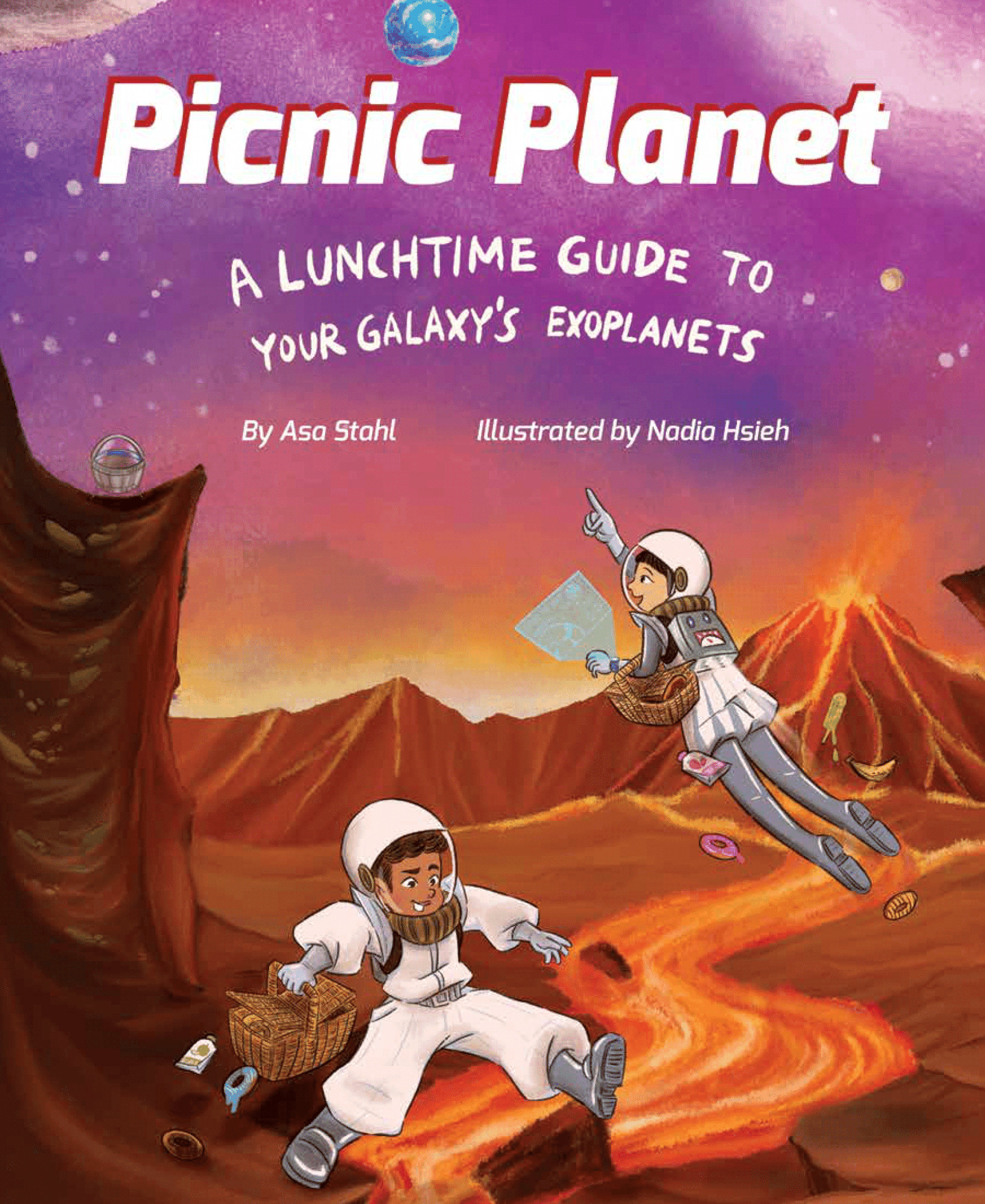
Picnic Planet

A Lunchtime Guide to Your Galaxy's Exoplanets
If you could go anywhere beyond our galaxy for the perfect picnic, where would you go? Picnic Planet takes readers on a tour of some of the fantastical — but real — exoplanets discovered to date. Wicker basket not included.
Available Now
Reviews
“Stahl's wonderfully clever picture book uses the idea of finding the perfect picnic spot to explore the characteristics of different exoplanets, trillions of miles away from Earth, as well as the idea that Earth is a "Goldilocks" planet with just the right conditions for life. In the book, two futuristic-looking children zip around in a personal spaceship and evaluate each potential picnic location. Mars, in our own solar system, has too many robots and not enough planetary comforts (e.g., grass, trees). So they buzz over to Proxima Centauri in the galaxy "next door" only to find it has no atmosphere. Other unsuitable planets are made only of gas, covered in lava or water, or without a star. One is—alarmingly—about to fall into its own sun! Hsieh makes good use of her experience with graphic novels to integrate panel art and blend drama and humor within the sci-fi and summer-picnic imagery. In the end, the children take their picnic to a rooftop on Earth where they can gaze at the stars they had been exploring. The author, a PhD student in astrophysics, has a contagious enthusiasm for the subject that even extends to the back matter, which offers more facts about all the planets in the story. Perfect for fans of space, adventures, and daring picnics."
- Booklist (Starred Review)
"An astrophysicist tries to help out a pair of space-traveling picnickers searching for just the right spot.
The space-suited duo—one brown-skinned, the other presenting Asian in Hsieh’s cartoon illustrations—try Mars first but turn out to be picky sorts who demand a place with grass, trees, and a babbling brook. There’s nothing for it, then, but to bid the planets of our solar system goodbye one by one (“Back in a jiff, Jupiter!”) and try out Stahl’s much more far-flung suggestions…all of which, he explains in an expansive afterword, are real places. Proxima Centauri b? “Um. Beautiful, in its own rugged way.” But not much atmosphere. Gigantic HR 8799 e? Plenty of atmosphere, but any core surface is probably a “super-hot mess.” Other possibilities turn out to have issues, too, like being so close to its star that you age a year in just four hours or lacking a star altogether. Stahl’s final idea may not have a woodsy setting, but readers might find it more feasible: Why not spread a blanket up on a roof? “Then all you need are stars,” he notes, as readers get a final view of the young voyagers sitting on a rooftop, admiring a sparkling nighttime vista overhead. The source list at the end is all technical reports, and if the depictions of exoplanets and attendant stars are speculative, all are based on current information.
Too far to go in a spaceship but just right for a flight of imagination."
The space-suited duo—one brown-skinned, the other presenting Asian in Hsieh’s cartoon illustrations—try Mars first but turn out to be picky sorts who demand a place with grass, trees, and a babbling brook. There’s nothing for it, then, but to bid the planets of our solar system goodbye one by one (“Back in a jiff, Jupiter!”) and try out Stahl’s much more far-flung suggestions…all of which, he explains in an expansive afterword, are real places. Proxima Centauri b? “Um. Beautiful, in its own rugged way.” But not much atmosphere. Gigantic HR 8799 e? Plenty of atmosphere, but any core surface is probably a “super-hot mess.” Other possibilities turn out to have issues, too, like being so close to its star that you age a year in just four hours or lacking a star altogether. Stahl’s final idea may not have a woodsy setting, but readers might find it more feasible: Why not spread a blanket up on a roof? “Then all you need are stars,” he notes, as readers get a final view of the young voyagers sitting on a rooftop, admiring a sparkling nighttime vista overhead. The source list at the end is all technical reports, and if the depictions of exoplanets and attendant stars are speculative, all are based on current information.
Too far to go in a spaceship but just right for a flight of imagination."
- Kirkus
Image credit: NASA, ESA and the Hubble SM4 ERO Team (cropped by AS)